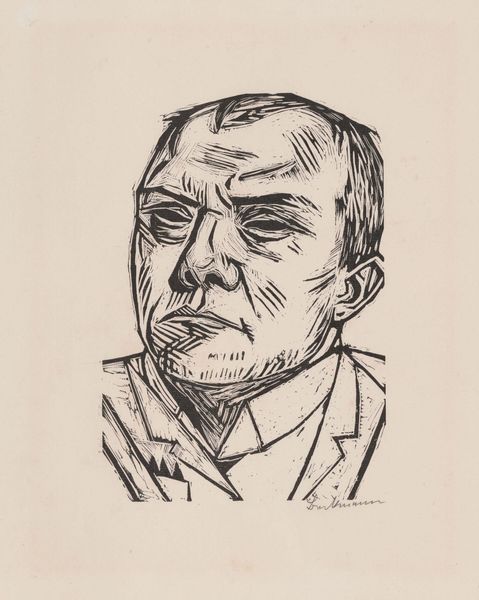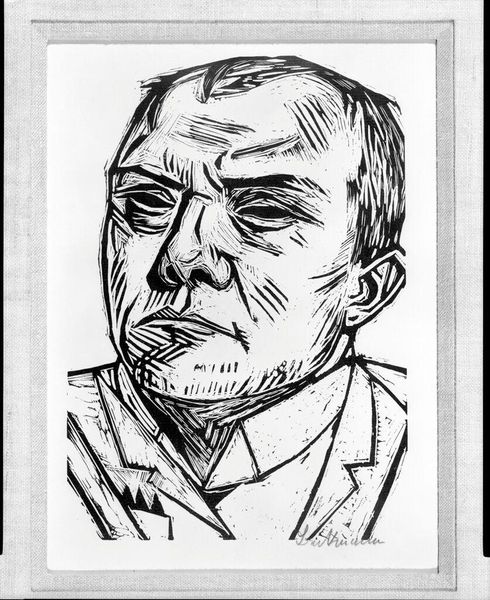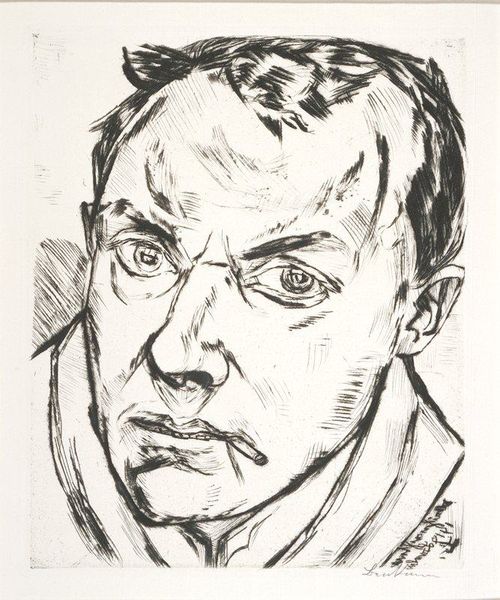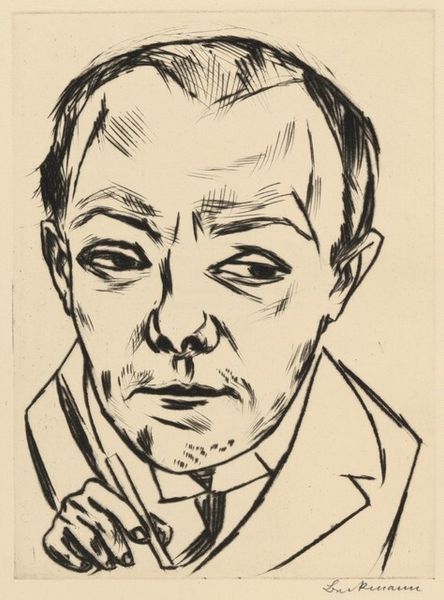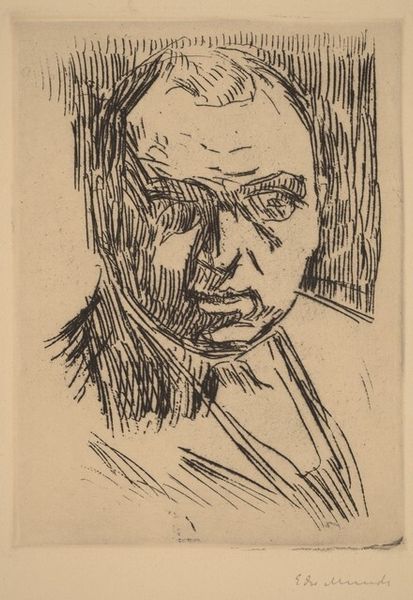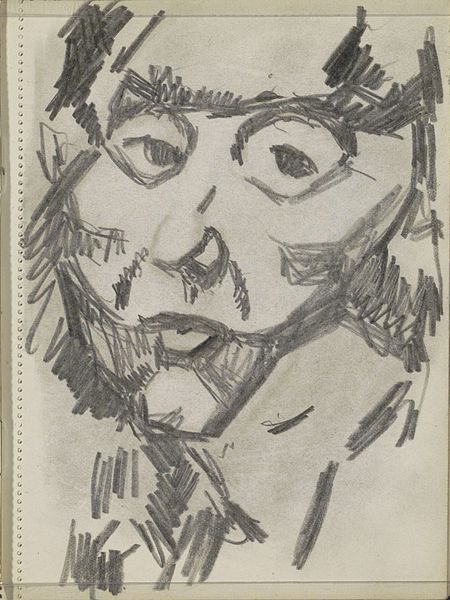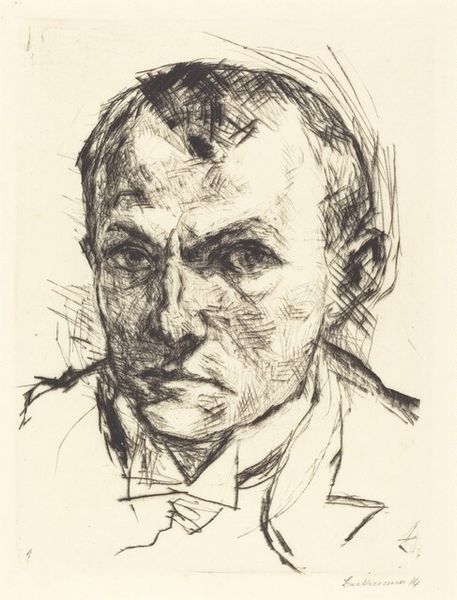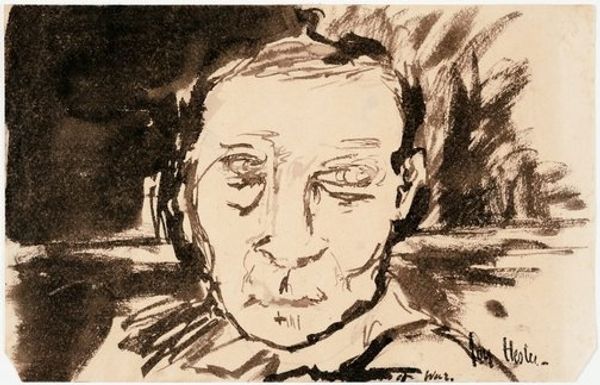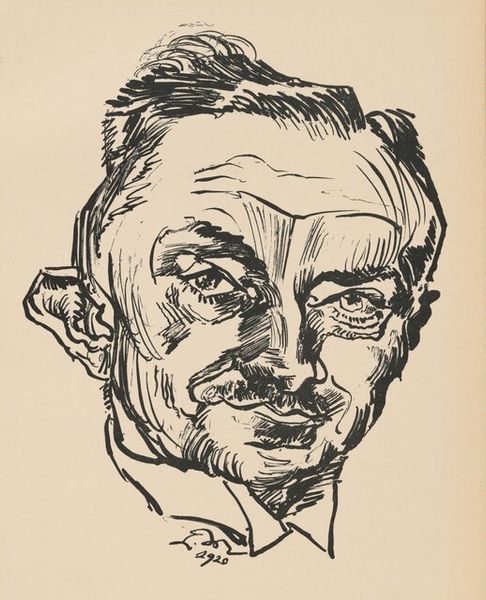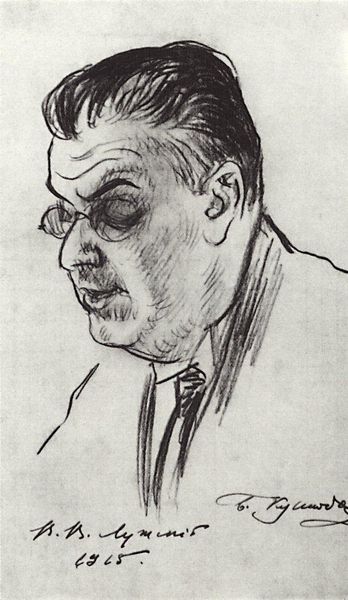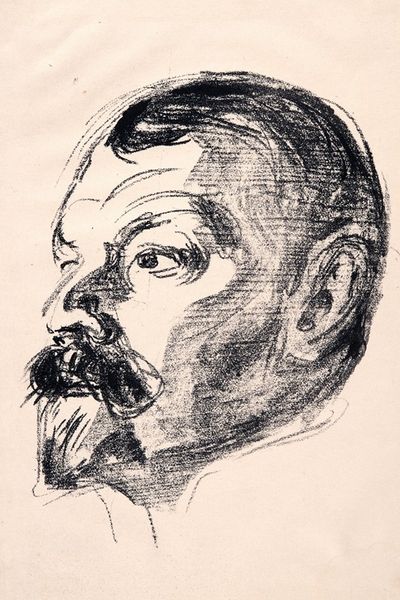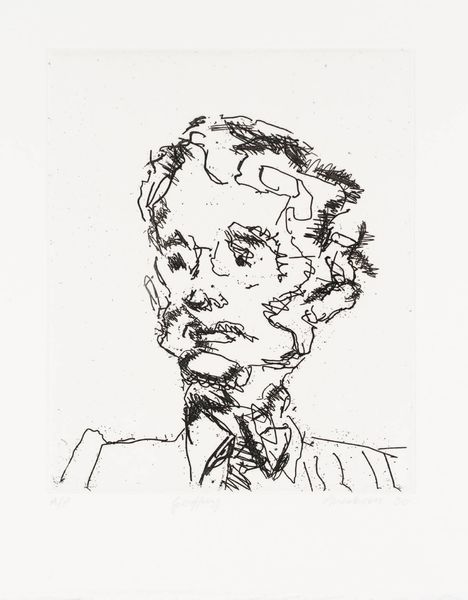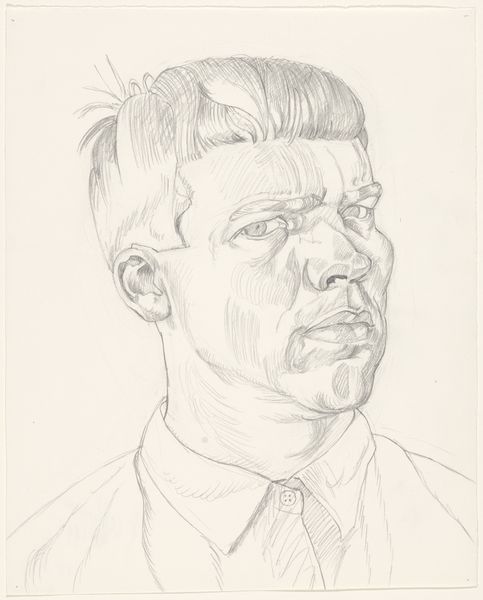
print, woodcut
#
portrait
#
self-portrait
# print
#
expressionism
#
woodcut
Dimensions: 8 11/16 x 6 1/16 in. (22.07 x 15.4 cm) (image)
Copyright: No Copyright - United States
Curator: This is Max Beckmann’s Self-Portrait, created in 1922. It’s currently housed here at the Minneapolis Institute of Art. As you can see, the artwork is a woodcut print. Editor: Right, woodcut. That explains the striking starkness of it. My immediate impression is that it radiates intensity. I can almost feel the weight of his gaze, that heavy brow… I’d call it introspective, wouldn’t you? But bordering on severe. Curator: The materiality certainly enhances the severity. Woodcut as a medium allows for stark contrasts – it is quite impactful given how Expressionist artists navigated self-representation. There is a sense of a rough cut. Not refined. What would that imply? What narratives and modes of consumption does this invite? Editor: You know, that roughness makes me think of personal struggle and upheaval. 1922, Germany… everything was in chaos, both politically and socially. You can feel the weariness, as he carves his very being into the wood, wrestling with…something monumental. Almost defiant! Curator: His deliberate choice of woodcut aligns perfectly with Expressionism's focus on emotional impact. Consider the labour involved—the physical act of carving into wood reflects a grappling with inner turmoil, but simultaneously mirrors the broader societal turmoil that Expressionists captured and addressed in the Weimar Republic. How is that defiance materialised and encoded? Editor: Yes, absolutely. You said that "grappling," that feels apt. In carving his own likeness, Beckmann isn’t just presenting himself. He’s forcing himself, and us, to confront a very raw, unvarnished reality. It has an uncompromising truth, but is so aesthetically direct. And personally, that honesty is what pulls me in. What kind of historical agency might his 'carving' claim or enable? Curator: And within its visual encoding lies so much labour—both from the creator as artist but potentially a commentary on industrial modes that reproduce the artist's identity as the artist himself labors in visualizing, quite self-consciously I think, a modern state. Editor: I appreciate how we are forced into dialogue here; I can definitely see it in his eyes. Thanks for shining new light here! Curator: And thank you.
Comments
No comments
Be the first to comment and join the conversation on the ultimate creative platform.
